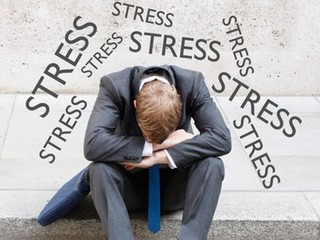Global AI in healthcare market expected to rise to $164B by 2030
The market size for 2023 was $10.31 billion
Read more... Recent data has shown that burnout among workers is actually going up, rather than down; this is despite, or maybe because of, things mostly getting back to normal for many employees. In total, 59% of American workers saying they are experiencing at least moderate levels of burnout, up from 52% in 2021, and on par with the levels reported in 2020 at the height of the COVID-19 pandemic.
Recent data has shown that burnout among workers is actually going up, rather than down; this is despite, or maybe because of, things mostly getting back to normal for many employees. In total, 59% of American workers saying they are experiencing at least moderate levels of burnout, up from 52% in 2021, and on par with the levels reported in 2020 at the height of the COVID-19 pandemic.
It's even worse for the healthcare sector, which was experiencing a burnout problem even before COVID, but which got much worse as a result of the pandemic, as has been widely reported, thanks to workers facing increased stress and workload.
The healthcare space saw a similar trajectory to the workforce as a whole, with burnout increasing in late 2021, according to data out from JAMA Health Forum. Perhaps not coincidentally, this coincided with an increase in cases, which reached their highest point by far in the entire pandemic, as well as a spike in deaths.
The survey, which talked to 20,627 US clinicians found that the burnoutrate was 45% in 2019, before dropping to between 40% to 45% in early 2020. It rose to 50% in late 2020, and then again to 60% by late 2021. Unsurprisingly, this corresponded with a higher intent to leave, growing from 24% in 2019 to more than 40% in late 2021.
There are two factors that seem to have contributed the most to the increase in burnout rate: workplaces that are more "chaotic" and those with poor teamwork.
In the fourth quarter of 2021, burnout in environments described as "chaotic" was at 78%, while "calmer environments" saw burnout that was nearly half that, at 36%. Burnout rates were 88% for people who described having "poor teamwork" in their work environments, compared to 49% for those who had "good teamwork."
Ultimately, though, healthcare workers, like everyone else, want to feel like their work is appreciated: 69% of those who said they were not feeling valued were burnouts, versus 37% who said they were feeling valued.
As to why are burnout rates rose so sharply at this point, as opposed to earlier in the pandemic, the study hypothesizes that, in part, it "may indicate a sense of determination and purpose among these professionals," but eventually too much chaos and overwork took its toll.
"However, the data show how the persistent lack of control of workload, chaotic environments, challenges with teamwork, and a lack of feeling valued by organizations may have contributed to worsening burnout and a rise in intent to leave," the report says.
The report doesn't just report on how workers are feeling, though; it also has some suggestions on what can be done to help employers in the healthcare space retain their workers.
"Being knowledgeable of such trends in burnout, seen also in non–health care workers during this challenging time period, and the associated work-life characteristics could allow organizations to make adjustments in real time to modulate workload, reduce chaos, and improve teamwork and sense of value, thus providing a meaningful opportunity to address burnout and retention," it reads.
Among those suggestions for how to tackle the burnout problem includes a set of KPIs, such as work stressors, burnout mitigators, and clinician outcomes, to help employers track how workers are doing at any given moment, and to give them a warning if there's a problem.
"With recommendations to put burnout on organizational dashboards, the KPI strategy could provide measurable and remediable work conditions and outcomes to guide optimizing a work environment for protection of the health care team," it said in the report.
This also will have a monetary benefit for employers, who spend $5 billion in turnover costs when their workers burn out and leave.
"Because of the pandemic’s persistence, caring for health care professionals and other staff is more important than ever. The KPI measures could serve as an early warning system during times of stress to identify challenges and opportunities to improve the work environment."
(Image source: healthcarefinancenews.com)
The market size for 2023 was $10.31 billion
Read more...At Culture, Religion & Tech, take II in Miami on October 29, 2024
Read more...The company will use the funding to broaden the scope of its AI, including new administrative tasks
Read more...